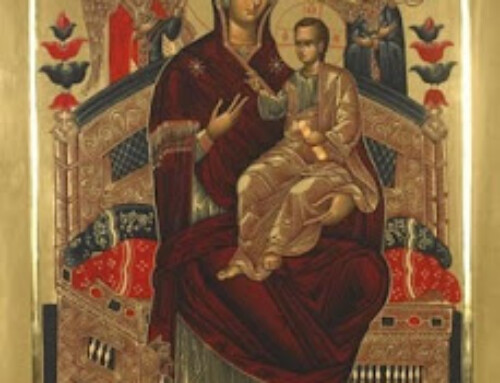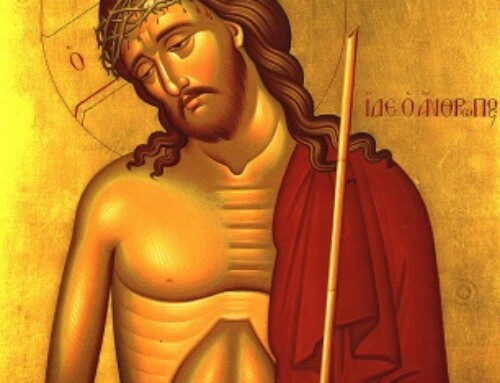Word Magazine February 1995 Page 19-20
FOLLOWING THE SAINTS
By Valerie G. Zahirsky
What understanding, what attitude do our young people have about saints? It may be that their ideas are completely wrong, despite our efforts over the years to introduce them to individual saints and to the concept of sainthood in general. They may be unaware of the diversity in life and activity among the saints. They may not know how the saints had to struggle against their own weaknesses to become holy and that it was not “easy” for them. Young people may believe that saints are dour, lifeless paragons — an idea reflected in a popular song by Billy Joel a few years ago in which he sings, “I’d rather laugh with the sinners than cry with the saints.”
How much our young people miss by not knowing these holy people, and how diminished their conception of Orthodoxy if, they do not know its “humanness!” This study unit will attempt to enrich their knowledge of saints, using two books from the SAINTS FOR ALL AGES series: New Apostles for Christ (Book 3) and Great Monks of the Desert (Book 8). The unit is planned for two one-hour sessions, though it may easily be extended if class discussion is lively and other books in the above series are used for further study.
Session 1:
1) Ask the students, using pen and paper, to write down the things that come to mind when they hear the word “saint.”
2) Discuss with the students what the sources of their knowledge about saints are (e.g. their work in church school over the years; knowledge and experience gained at home in the form of names’ day celebrations or family patron saints they know about; icons seen in church or at home; popular ideas about saints that come from books, the media, or conversation; etc.)
3) Talk with them about some of the common misconceptions concerning individual saints; for example the making of St. Nicholas into the secular figure of Santa Claus, and the association of St. Valentine, a priest who was martyred under the Roman emperor Claudius, with romantic love and Cupid’s arrows.
4) To broaden the students’ perspective on what “saint” means in the Church, have them look at and discuss the following passages from the Old and New Testaments. (The passages may be divided up, allowing each student to report to the others on what they found and what they believe the passage says about sainthood.) Suggested points for you to try to bring out in the discussion appear in parentheses.
—Psalms 97, 132, 145. (What does the word “saint” mean in the Old Testament? Quite obviously, it refers to a devout follower of God. The difference between its use in the Old Testament and its use in the New Testament is that after the coming of Christ, “saint” meant one who followed God by worshipping His Divine Son.)
—Acts 9. (The startling change that took place in Paul, from persecutor to member of the Christian Church, shows us that it was not an “automatic” or easy thing to be a saint. Paul had to revise his whole way of thinking about the new sect. It is also noteworthy that once he did so, and spent some time among the apostles, they accepted him readily, not holding his past against him.)
—Romans 15:25 to 16:16. (This passage makes very clear the word “saint” as Paul uses it means a member of the Church. The passage also gives us a good deal of insight into Paul’s life as a traveler. He was often in physical danger, depending on his fellow Christians for hospitality and support, and obviously met many people in his work. Students may want to find out more about some of the more prominent people mentioned in the long list of Christians in Ch. 16, such as the deaconess Phoebe, and Prisca and Aquila. The mention of Spain in 15:28 also gives us an idea of just how far Paul traveled in these busy years.)
—1 Cor. 1:1-3. (Here, in verse 2, is a definition of “saint” that can be applied to us today as well as to the early Christians; we too are called.)
—Romans 5:1-4. (This passage, like those following, does not mention the word saint but does tell us what saints must do. Here we have the idea of perseverance through sufferings.)
—Romans 12. (Though we sometimes have the idea that all the saints did basically the same thing, Paul points out here the diversity of gifts and functions, and therefore of activity, among Christians.)
—1 Cor. 12:27-13:13. (Here again, Paul talks about the diversity of gifts and functions, but points out that no gift is being rightly used unless it is based on love.)
—1Timothy 4:11-16. (Here are outlined the duties of a server in the Church. The passage may be of special interest to students because of its emphasis on the possibility for a young person to set an example for others.)
Having looked through these Bible passages, make with your students a list of the qualities found in them, and the ideas they contain about sainthood. The list might include: willingness to persevere even in the fact of great difficulty, importance of recognizing that all Christians are called to be saints, the diversity of age, types of gifts, social position found among saints and the fact that both men and women are included, the definition of a saint as simply a devout follower of God.
Session Two:
1) Review the information gathered in the previous session.
2) Keeping in mind the information about saints, tell the class you would like to see how the Church’s veneration of some particular saints reflects these qualities. For this comparison, we will look at the troparia for St. John Chrysostom and St. Innocent. These are two very different saints; one is from the ancient Church and one from our own time. While St. John Chrysostom dealt mostly with people who were already nominally Christian, St. Innocent went among those who had never even heard of Christ. Yet in the troparia we see some shared qualities.
Look at the two tropars with your students (either writing them on the board or copying them and handing them out.) Ask the students to find some key words, and discuss what qualities the key words reflect. (Some key words have been underlined for you, but you may prefer to have the class find their own, and these may be words other than those underlined.)
St. John Chrysostom:
Grace shining forth from your lips like a beacon
Has enlightened the universe.
It has revealed to us the heights of humility.
It has shone to us the riches of poverty.
Teaching us by your words, O Father John Chrysostom!
Intercede before the Word, Christ our God, to save our souls.
St. Innocent:
O holy Father Innocent! In obedience to the will of God
You accepted dangers and tribulations
Leading many peoples to the knowledge of truth.
You showed us the way; now by your prayers help lead us into the Kingdom of heaven.
3) Ask each class member to choose and read a story from either New Apostles for Christ or Great Monks of the Desert. Have each student report back to the class on the following:
—the special qualities of the person they read about
—how that person reflects the qualities of sainthood discussed so far
—some way they see that person’s life as relating to their own, and what opportunities they might see in their own life to witness as that saint did (or they may choose to discover more about either St. John Chrysostom or St. Innocent, and report on the one they have chosen.)




